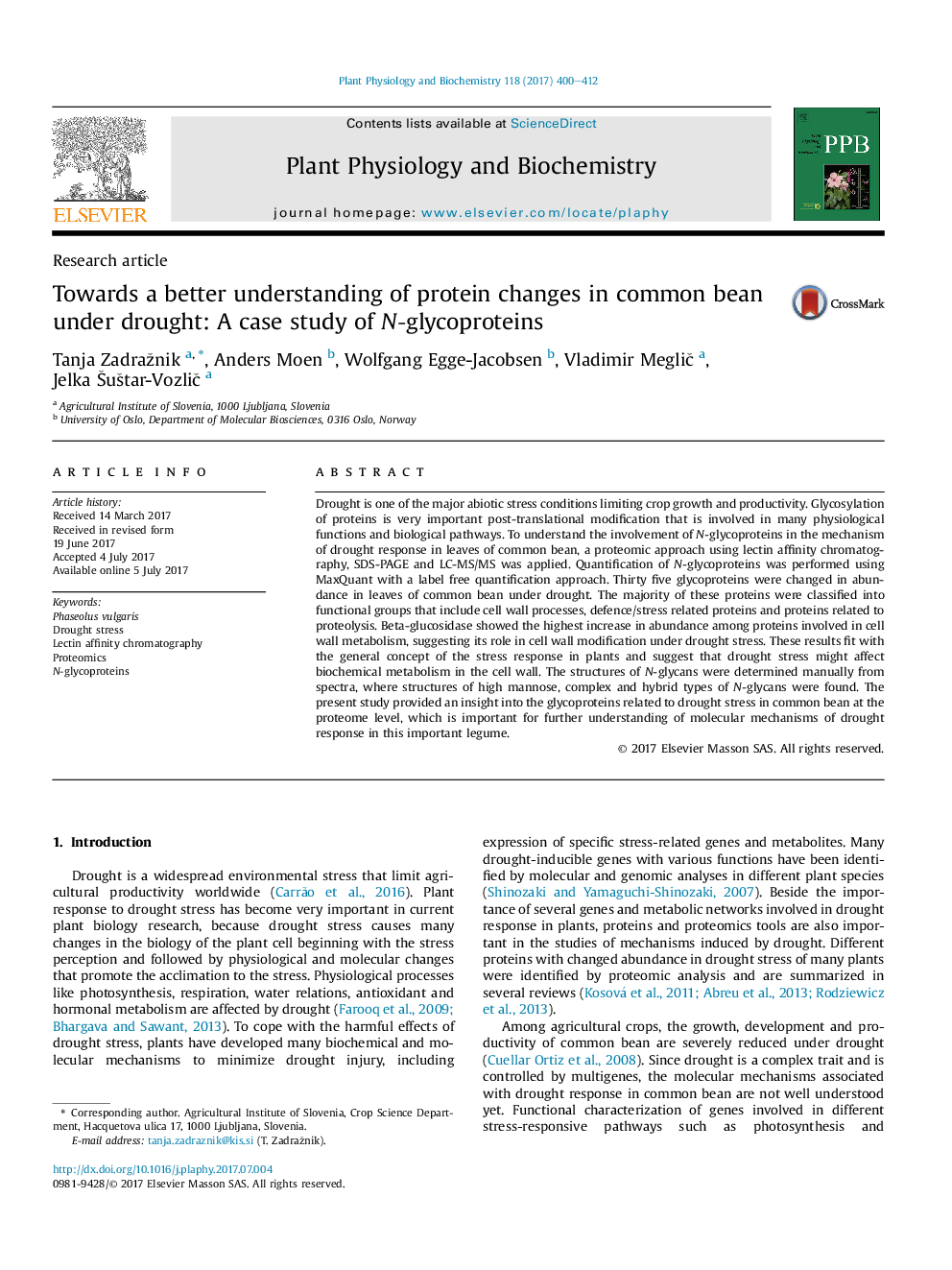| Article ID | Journal | Published Year | Pages | File Type |
|---|---|---|---|---|
| 5515457 | Plant Physiology and Biochemistry | 2017 | 13 Pages |
â¢Quantification of N-glycoproteins was performed with MaxQuant using a label free quantification.â¢Thirty five N-glycoproteins revealed changed abundance in leaves of common bean under drought.â¢Beta-glucosidase showed the highest increase in abundance among proteins involved in cell wall metabolism.â¢Structures of high mannose, complex and hybrid types of N-glycans were found by manual inspection from spectra.
Drought is one of the major abiotic stress conditions limiting crop growth and productivity. Glycosylation of proteins is very important post-translational modification that is involved in many physiological functions and biological pathways. To understand the involvement of N-glycoproteins in the mechanism of drought response in leaves of common bean, a proteomic approach using lectin affinity chromatography, SDS-PAGE and LC-MS/MS was applied. Quantification of N-glycoproteins was performed using MaxQuant with a label free quantification approach. Thirty five glycoproteins were changed in abundance in leaves of common bean under drought. The majority of these proteins were classified into functional groups that include cell wall processes, defence/stress related proteins and proteins related to proteolysis. Beta-glucosidase showed the highest increase in abundance among proteins involved in cell wall metabolism, suggesting its role in cell wall modification under drought stress. These results fit with the general concept of the stress response in plants and suggest that drought stress might affect biochemical metabolism in the cell wall. The structures of N-glycans were determined manually from spectra, where structures of high mannose, complex and hybrid types of N-glycans were found. The present study provided an insight into the glycoproteins related to drought stress in common bean at the proteome level, which is important for further understanding of molecular mechanisms of drought response in this important legume.
